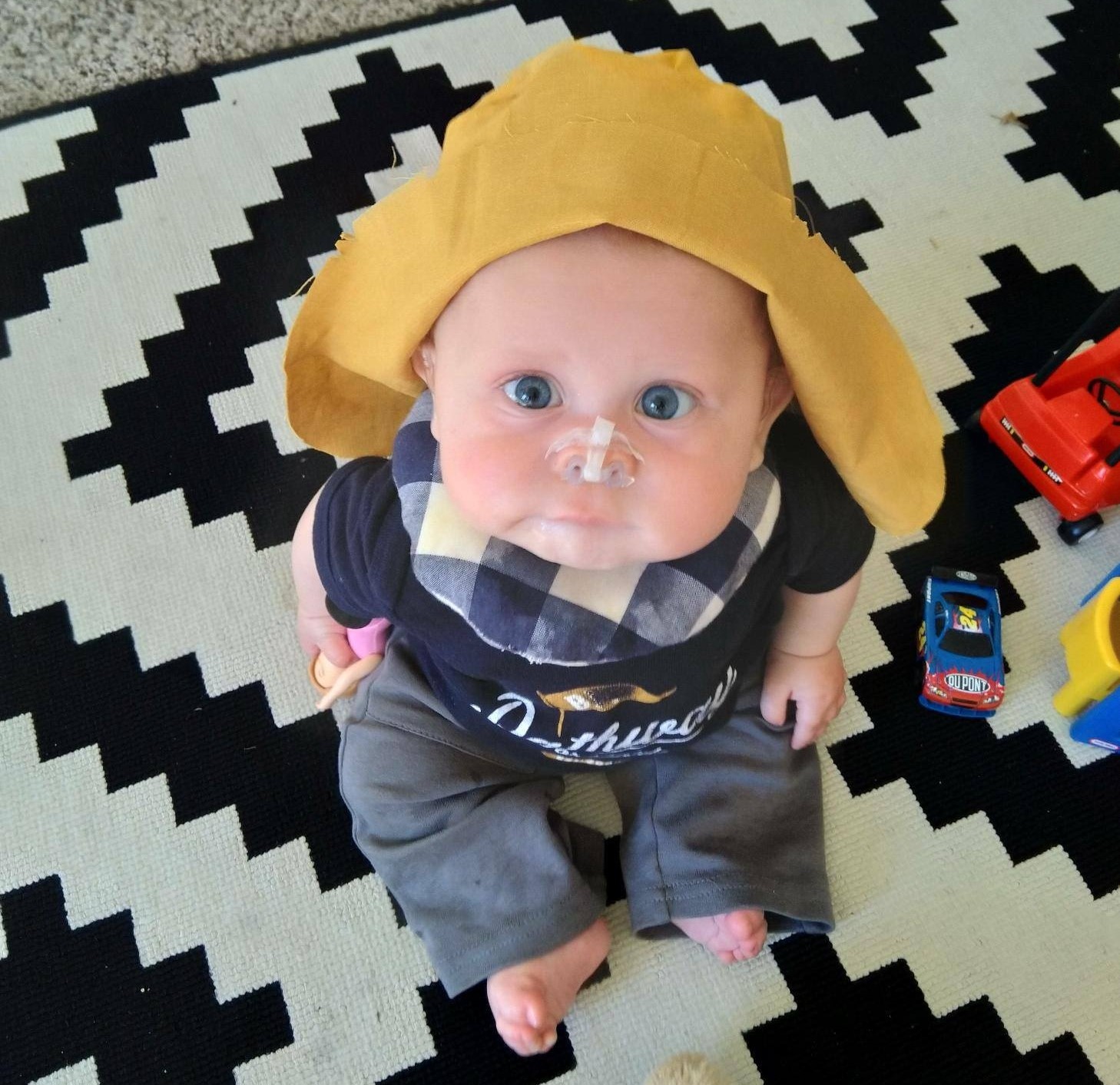Lesson 3 - Expanding the Child's World
In this lesson, we turn our attention to strategies you can use to encourage families and caregivers to expand the world of an infant or toddler who is deafblind. These include ways to encourage their child to explore, engage in a variety of sensory experiences, communicate, and interact and have fun with others. It also includes strategies to create learning and connection in environments that are outside the home.
For more information, visit the National Center on Deaf-Blindness at nationaldb.org.

Learning Objectives
Lesson 3 has three learning objectives. After completing the lesson, participants should be able to
- Describe how to expand an infant or toddler’s world by creating opportunities for self-initiated learning
- Demonstrate strategies that encourage a child’s mobility and connections with others
- Explain the importance of broadening the number of environments and interactions a child has outside the home
Part 1 - Creating Opportunities for Self-Initiated Learning
Part 1 focuses on creating opportunities that encourage self-initiated exploration and learning for an infant or toddler who is deafblind.
Activities
Instructors: The following activities can be adapted for a variety of purposes. For example, have participants turn in written or posted responses, or use the topics and questions as discussion starters. Some can be used for group activities.
Option 1
In this section, you learned about the importance of intentionally creating opportunities that motivate a child who is deafblind to want to learn by making deliberate choices about materials and activities that heighten their curiosity and make it easy for them to engage in self-initiated learning. Why must this be done for children who are deafblind?
Option 2
Imagine that you are on a home visit with an infant or toddler who is deafblind. You notice that the caregiver keeps moving the child’s hands so that they come in contact with objects scattered on the floor nearby. Why should directing the child’s attention in this way be avoided? How would you explain this to the caregiver?
Part 2 - Encouraging Mobility and Engagement with Others
Part 2 looks at how to safely expand a child’s world by encouraging them to move, explore, and engage with others.
Activities
Instructors: The following activities can be adapted for a variety of purposes. For example, have participants turn in written or posted responses, or use the topics and questions as discussion starters. Some can be used for group activities.
Option 1
Imagine you are on a home visit with a toddler who is deafblind and has limited use of her hands. You notice that she often wants to touch new things with her feet. Brainstorm situations and/or activities you could create that would provide opportunities for her to move and explore new things.
Option 2
Select a culture different from your own and do some online research to learn about a popular nursery rhyme with movements or gestures from that culture. What adaptations might need to be made to the song or its movements if used with a child who is deafblind?
Option 3
Imagine you are in an online meeting, such as on Zoom, with a parent of a toddler who is deafblind. What would you say or do to explain how to use the pause strategy when interacting with their child? What would you say to explain how this strategy strengthens the child’s communication and their relationship with the parent?
Part 3 - Expanding Their World to More People and Places
In Part 3, you’ll learn ways to support a child who is deafblind to explore environments outside the home, meet new people, and interact with peers.
Activities
Instructors: The following activities can be adapted for a variety of purposes. For example, have participants turn in written or posted responses, or use the topics and questions as discussion starters. Some can be used for group activities.
Option 1
How might you respond to a parent who is fearful about having their toddler be part of a toddler group or other new activity outside the home? What might you say to the parent to help encourage their support of the child’s participation?
Option 2
Visit the National Center on Deaf-Blindness website and find your state deaf-blind project's contact information. Contact them and find out what activities and events they offer that you could share with families of children who are deafblind.
Option 3
Read this Paths to Literacy blog post on experience books. Using the information in the post and your own ideas, consider what characteristics make objects meaningful. The next time you are on a walk or at a fun activity, collect several objects that will help you remember the experience. What are the sensory characteristics of the objects you collected that might be appealing to a child who is deafblind?
Quiz
Instructors are welcome to use this quiz as-is or adapt it to meet their needs. It can be used to test participants’ knowledge following completion of the module or for pre- and post-test evaluation. To obtain answers to the quiz, instructors should contact support@nationaldb.org.
Additional Resources
Active Learning
Resources on "Active Learning," an approach based on the work of Lilli Nielsen, which involves a range of strategies to create developmentally appropriate and enriching environments
Active Learning: NCDB Practice Guide
A list of the essential components and skills needed when using the Active Learning approach with children who are deafblind
Experience-Based Learning
Resources on how to create motivating real-life experiences, instruction, and environments that help children who are deafblind experience the people, places, and things that are not readily available to them due to limited opportunities for incidental learning
